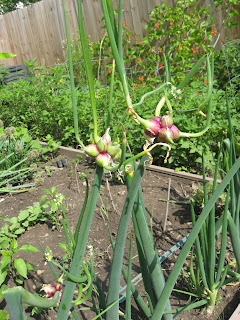 |
| I think Scorzonera has high potential for an edible leaf crop. |
Sunday, July 14, 2013
Scorzonera
Scorzonera hispanica is a unique perennial plant that I have been growing for a couple of years. To the untrained eye, it appears to be nothing more than a large dandelion. Scorzonera does have rather dandelion-like flowers, has a deep taproot, and produces a milky latex sap, but is not a dandelion. Scorzonera is used for its edible root, that is sometimes called vegetable oyster (the plant is very similar in appearance to salsify). The leaves are also perfectly edible in my experience. They can be a bit tough when old, but I have never tasted a bitter scorzonera leaf in any season.
Saturday, July 13, 2013
Variegated Blackberry?
 | ||
| This is the whole patch of mutated blackberry plants. |
Friday, June 28, 2013
Taro Experiment
I have heard on the internet that it is possible to grow taro from store-bought corms. Taro is an edible root vegetable from the tropics in Asia also known as Colocasia esculenta. The has very large leaves that are grown in the ornamental garden and known as elephant ears. Having read some more information on the subject, I headed to the local Asian supermarket and bought a few corms for a very low price. The corms are way hairier than I expected, but that isn't a problem.
 |
| These are the future taro plants I bought. |
Thursday, June 27, 2013
Seeing Red
Right now in the garden, there are many flowers in bloom, many of which have reddish and scarlet hues.
 |
| Monarda didyma flower |
Wednesday, June 26, 2013
An Intro to Walking Onions
 |
| These are some walking onions in the garden. |
New Blog
I am now starting this blog to have something that allows me to share my adventures. I am currently a teenager seeking a path in the world of plants, a seemingly confusing path full of adventures and learning. Being an avid gardener and wildlife enthusiast, I am always surrounded by plants and will have tons of pictures to share. My garden tends to have many of the ordinary tomatoes, squash, and beans, but with a bit of exotic and unexpected flair. If you are reading this, stick around for some interesting shots!
Subscribe to:
Posts (Atom)